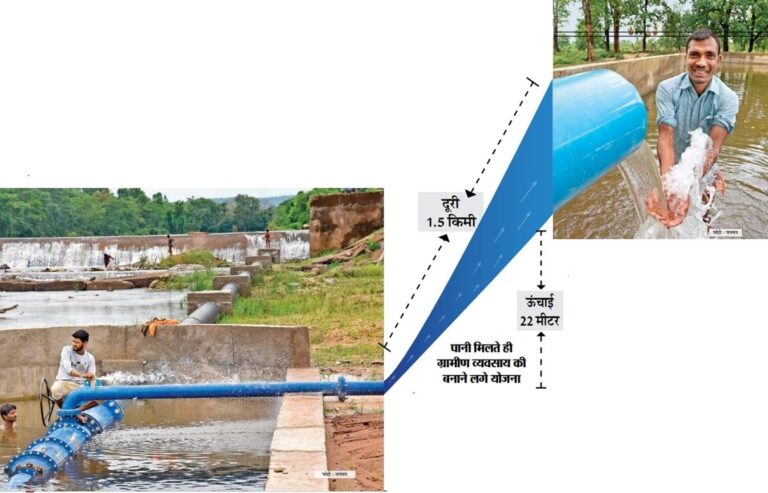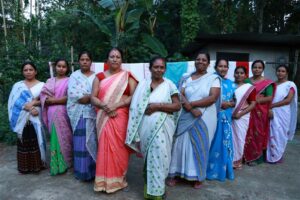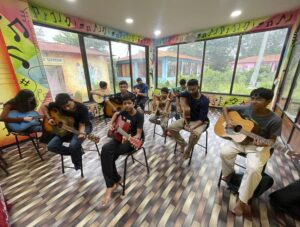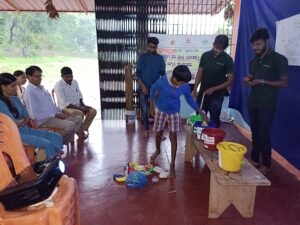Pardeshi ram markami, a resident of Girdalpara village of Sukma, used to take up crops only during rainy season. In other times of the year he and his family barely earn the square meal from collection of forest produce and other nominal works. They didn’t even have enough money to fulfill basic needs. But all these are the tale of foregone days, because Pardesi and other villagers are doing multi cropping activities on their field. At girdalpara, since second half of 2021 villagers no more need to worry about the irrigation facilities anymore.
With the far-sightedness of the then district collector Vinit Nandanwar and continuous efforts of district administration the villagers were able to get full-fledged irrigation facility. The project is established on the perennial river Malger, where Girdalpara was selected for the initial phase of the project.
Girdalpara is a dependent village of the left-wing extremism affected Panchayat of Kerlapal. The village, infamous for abduction of former DM Alex Paul Menon, is now has a hydro power irrigation project which supplies water to the fields without use of any conventional or non-conventional fuel, solely with the help of pressure generated from water. The water from the river is collected against the gravity with the help of the turbine system and pen stock at a water tank constructed at a distance of one and half kilometer and a height of twenty meter from the river bed. With a one-time investment of 1.5 crore and technological help from Indian Institute of science, Bengaluru project took its tangible form in nearly two years.
Sukma is a tribal dominated and severely left-wing extremism affected area. Literacy rate of the district is somewhere near 35%. People here are skeptical towards administration, always afraid of government as encroachers. On the other hand administration needed land to build the collection tank and construction of small canals which will lead to farmers land. To break the ice and establish harmony between people and administration various step were taken by the administration.
Thirty meetings were conducted by the district collector and other district level officers in the span of sixteen months to gain the trust of the villagers and to convert their skepticism into firm believe. Finally all the efforts and time put in by everyone made its way to reality. The project is a success story of how convergence leads to desirable change. It is story of together we can. It is the hard work and continuous believe of the departments like MGNREGA, horticulture, agriculture, village level authorities like Sarpanch and Sachiv who all worked day and night under the guidance and leadership of the district magistrate which bring the current form of the project in sight.
But all these and many more could have gone into vain if the people were not sufficiently skilled to maintain the project by themselves, to repair day to day wear and tear of the turbines and other equipment. Also the farmers here were only involved in sowing of paddy with traditional methods. To overcome the aforementioned problems few people with basic idea of mechanics were selected from the village and was trained to tackle all the possible problems in the project. They were also trained on how to do periodic maintenance of the machine. Again, the farmers were given special training of sowing paddy with modern method and how to get more yields with traditional methods. They were also taught to sow vegetables between two seasons and to take up crops like maize, moong along with paddy to diversify the crops. This will not only fetch them more profit but will also maintain soil fertility.
Another significance of the project is that the developmental project is sustainable and a zero carbon initiative. It runs without the use of any fuel or electricity or solar power and thus meeting the commitment of India at COP 26.
The project not only provides livelihood to around 250 members of fifty farmer families of the village but also protect from carbon footprint and developmental damage to the environment. In the construction of project, no tree has been chopped and no mass has been displaced. Beneficiaries are provided facility at their own land, near their own home and keeping in view their mode of requirement. Also single point of installation makes it a least maintenance project. A user manual has also been prepared for easy replication of project both within and outside the district. Already six new sites have been identified in the district to replicate the project by entering into MoU with IISc, Bengaluru.
Girdalpara now gives them round the year source of income along with curbing the seasonal migration. It is proving to be an important initiative enhancing the supply chain of the district and hence giving livelihood to many. An improved livelihood will definitely enhance the socio-economic condition of the people and generations to come.





